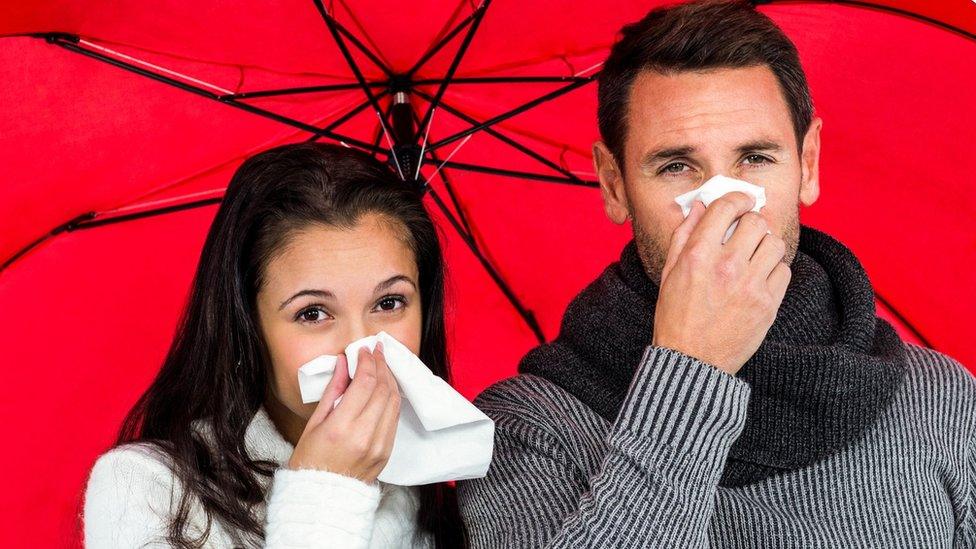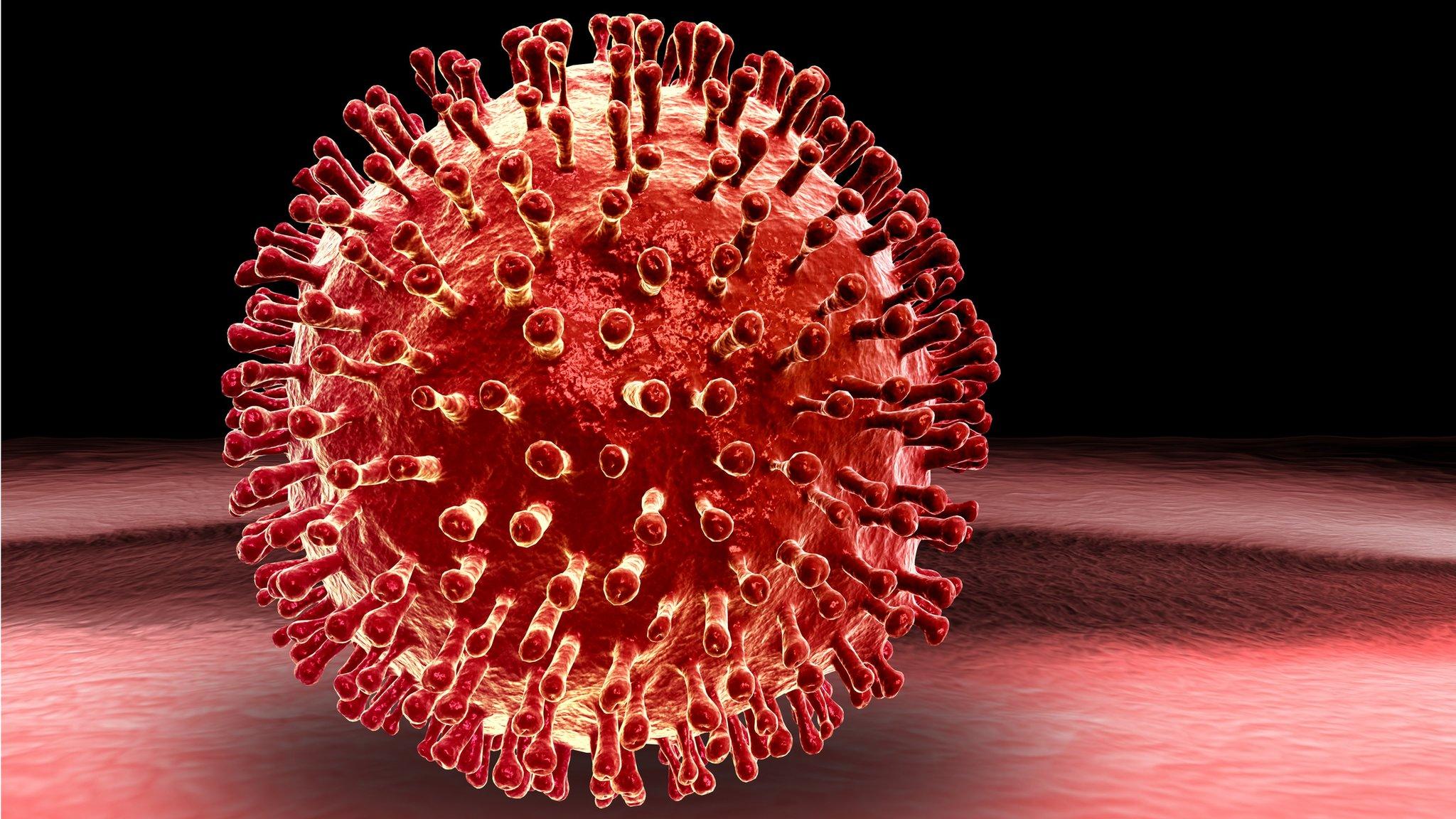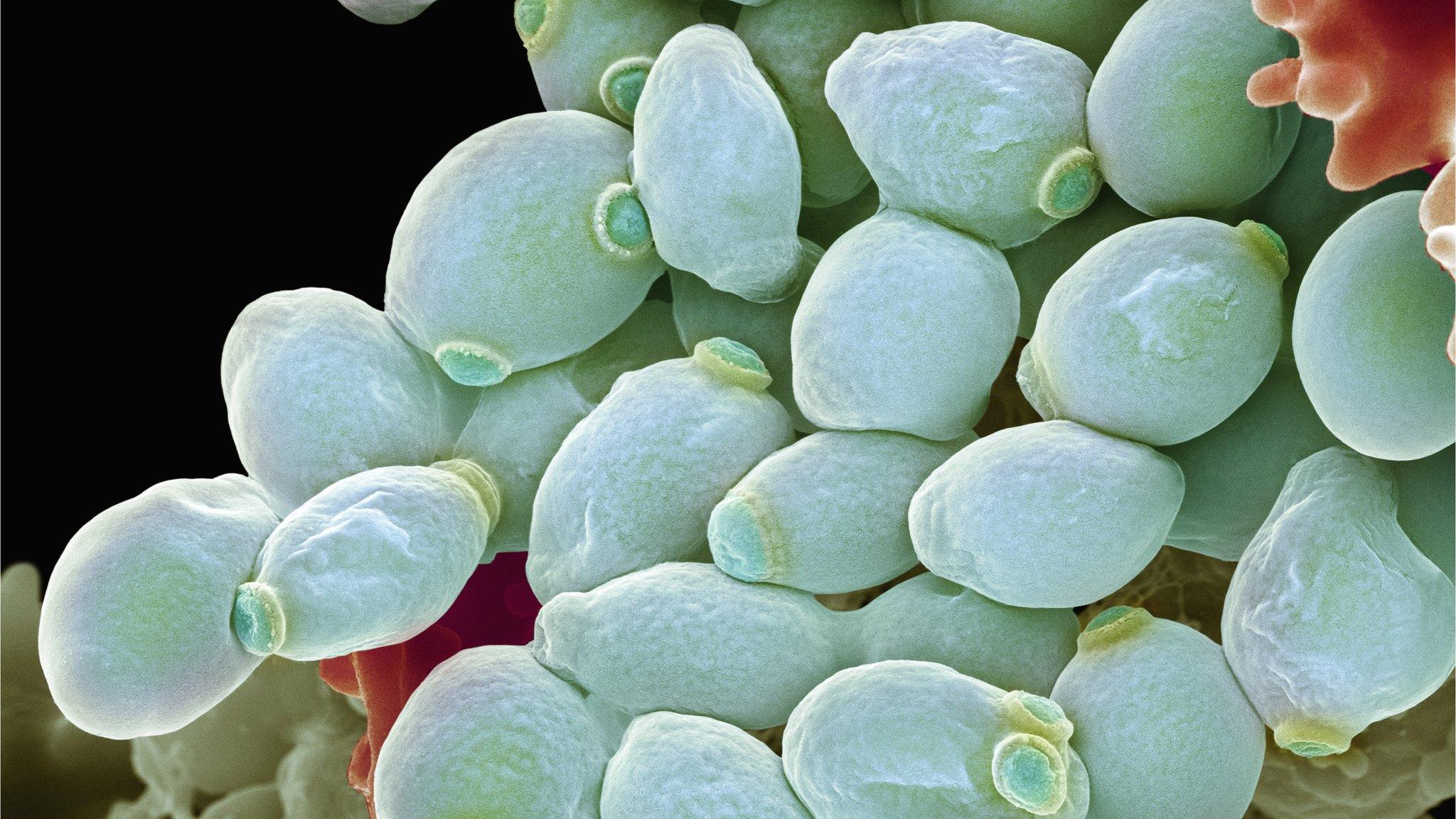'Gender-biased infections' may exist
- Published

Viruses can evolve to become more aggressive in men than in women - at least in theory, a study suggests.
The report, published in Nature Communications, external, argues there is a benefit to a virus "going easy" in women as it helps it spread.
Some infections are known to be less deadly in women, but this is largely put down to differences in the immune system.
Experts said the findings were intriguing.
Viruses have ways of spreading that are unique to women - such as to a child in the womb, during birth or breastfeeding.
Scientists at Royal Holloway University in London used mathematics to model whether this altered the way viruses behaved.
Their findings suggest there may be an advantage to infections being less aggressive in women as reducing the risk of killing the mother increases the chance of infecting the child.
Dr Francisco Ubeda, one of the researchers, said: "Viruses may be evolving to be less dangerous to women, looking to preserve the female population, the virus wants to be passed from mother to child, either through breastfeeding, or just through giving birth."
Studies have shown that gender plays a role in the types and severity of infections, external.
The main ideas are differences in the immune system, hormones or sex chromosomes affecting risk.
Dr Ubeda told the BBC News website: "We're turning it on its head and taking the pathogen's eye view.
"We show theoretically it is possible, which is challenging, but we haven't proven what the mechanism is that would trigger this difference.
"Or that there will be a difference in the pathogen's behaviour between in men and women."
The researchers argue that eventually it may be possible to use drugs to trick viruses into thinking they were infecting women in order to make them less aggressive.
But Dr Ubeda agrees this is firmly in the realm of "science fiction" at the moment.
Prof Jonathan Ball, a virologist from the University of Nottingham, told the BBC: "The possibility that a virus - or indeed any other infection - can fine-tune its ability to cause disease to help its transmission in either males or females is intriguing.
"Whilst the data is compelling, we have to remember that these are models nonetheless and testing them in real biological systems will be an important next step."
Follow James on Twitter., external
- Published16 August 2016

- Published9 August 2016

- Published5 July 2016
